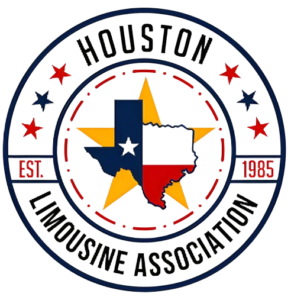Decoding the Language of Limousine Industry Abbreviation Codes
In the fast-paced world of the limousine industry, effective communication is essential for smooth operations. To streamline communication and enhance efficiency, abbreviation codes have become a common language among limousine service providers. These codes, such as POB (Passengers on Board) and PU (Pick Up), play a crucial role in conveying information quickly and accurately. In this article, we will delve into the development, importance, and significance of these abbreviation codes in the limousine industry. We will also explore why it is crucial for drivers to learn and understand them for optimal performance, even though in my opinion, many drivers do not use them anymore because technology has replace the need for it.
The Evolution of Limousine Industry Abbreviation Codes
The use of abbreviation codes in the limousine industry has evolved over time as a response to the need for efficient communication. As the industry grew, the volume of information exchanged between dispatchers and drivers increased exponentially. To expedite communication and minimize errors, industry professionals began using abbreviations to represent common phrases, locations, and actions. These codes were developed collaboratively, drawing from shared experiences and industry-specific knowledge. Over time, a standardized set of abbreviation codes emerged, forming a unique language understood by insiders of the limousine business.
These codes, such as POB (Passengers on Board) and PU (Pick Up), play a crucial role in conveying information quickly and accurately.
The Importance of Abbreviation Codes in the Limousine Industry
Abbreviation codes serve as a vital tool for efficient and effective communication within the limousine industry. With time-sensitive schedules, multiple reservations, and complex logistics, using these codes allows dispatchers and drivers to convey information quickly, reducing the chances of miscommunication. These codes streamline communication by condensing common phrases or actions into short, easily recognizable abbreviations. By using the established abbreviation codes, the industry can maintain a standardized system of communication, ensuring smooth operations and delivering exceptional service to clients.
Certainly! Here are some common abbreviation codes used in the limousine industry:
- POB: Passengers on Board
- PU: Pick Up
- DO: Drop Off
- ETA: Estimated Time of Arrival
- ETD: Estimated Time of Departure
- OTD: On Time Departure
- ETAH: Estimated Time of Arrival at Hotel
- RT: Round Trip
- OTR: On the Road
- INR: In Route
- OOO: Out of Office
- OOS: Out of Service
- RSV: Reservation
- CC: Credit Card
- CXL: Cancellation
- CP: Chauffeur/Driver
- GC: Gift Card
- MTC: Meet and Greet
- SED: Sedan
- SUV: Sport Utility Vehicle
- LIMO: Limousine
These abbreviations are commonly used in communications, reservation systems, and logistics within the limousine industry. They help streamline communication and ensure efficient operations.
The Significance of Learning Abbreviation Codes for Limousine Drivers
For limousine drivers, learning and understanding abbreviation codes is essential for successful on-the-job performance. Familiarity with these codes enables drivers to comprehend dispatch instructions swiftly and accurately. By using the industry-specific language, drivers can communicate effectively with dispatchers, fellow drivers, and other industry professionals. Additionally, understanding abbreviation codes saves time and minimizes confusion during radio or written communication, allowing drivers to focus on providing exceptional customer service and ensuring a seamless experience for passengers.
Familiarity with these codes enables drivers to comprehend dispatch instructions swiftly and accurately.
Pro Tips for Mastering Limousine Industry Abbreviation Codes:
- Study and memorize common codes:Take the time to study and memorize the frequently used abbreviation codes in the limousine industry. This will help you quickly interpret and respond to dispatch instructions.
- Create flashcards or cheat sheets: Develop flashcards or cheat sheets with the most common abbreviation codes. Review them regularly to reinforce your knowledge and improve recall during fast-paced situations.
- Practice using codes in simulated scenarios: Engage in role-playing exercises or simulated scenarios with fellow drivers or colleagues. Practice using abbreviation codes in realistic scenarios to enhance your proficiency and confidence.
- Stay updated with industry changes:Abbreviation codes may evolve or change over time. Stay updated with any new codes or modifications to ensure accurate and up-to-date communication with dispatchers and other industry professionals.
- Ask for clarification when needed:If you encounter an unfamiliar abbreviation code or are unsure of its meaning, don’t hesitate to ask for clarification. Clear communication is crucial for efficient operations, and seeking clarification ensures accuracy and professionalism.
The Language of Efficiency and Precision
In the dynamic world of the limousine industry, where time is of the essence, abbreviation codes serve as a language of efficiency and precision. Developed collaboratively and refined over time, these codes enable swift and accurate communication, enhancing operational effectiveness. Limousine drivers who understand and master these codes gain a competitive edge, ensuring smooth operations and exceptional service delivery. Embrace the language of limousine industry abbreviation codes, and elevate your performance as a professional in this fast-paced and customer-centric industry.



